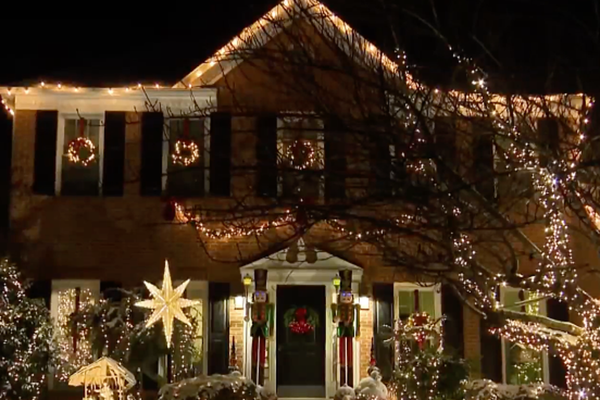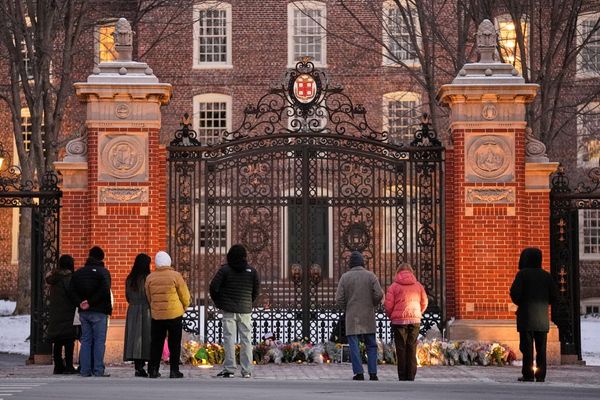I haven't posted on the Volokh Conspiracy in over a decade, because SCOTUSBlog is a better vehicle for my usual posts about Supreme Court minutiae. But one of my cases involves one of the more egregious miscarriages of justice I recall seeing in more than thirty years of practice. Yes, it involves a client of mine, but I try to take a detached view of the strengths and weaknesses of my cases. I've handled a lot of clients over the years, and this is the first case of mine that I'm blogging about.
The case against Andrew Dowd
At the center is Dr. Andrew Dowd, a 69-year-old orthopedic surgeon with no criminal history (beyond traffic tickets). He ran a hugely successful practice medical practice, with 10 offices that treated hundreds of patients annually. He was convicted of conspiring to operate on patients who claimed to have slipped and injured themselves at various properties, thereby inflating insurance settlements. The defense maintained that a pre-existing conspiracy—led by a disgraced former chiropractor, another doctor, and lawyers—funneled Dowd patients precisely because his high-volume practice made him unlikely to spot their fraud, and they knew Dowd was likely to operate on the patients based on their medical records and complaints.
The evidence that Dowd knew the patients were fraudulent was thin. The trial witnesses all arrived with MRI reports showing soft-tissue damage, and since the conspirators preferred recruiting people with genuine injuries (just not from where they claimed!), four of the five patients who testified actually had knee damage—and Dowd accurately noted after surgery that the fifth lacked the injury her MRI suggested. The other conspirators chatted openly about the scheme in emails and texts, but none looped in Dowd. When an insurer launched an investigation, the group discussed it, but no one alerted Dowd—implying even they didn't think he was "in on it." Dowd was convicted on a "conscious avoidance" theory: that he deliberately turned a blind eye to signs of fraud.
Dowd recently began serving an 8 ½-year sentence and was ordered to forfeit $8.1 million. While numerous aspects of his case strike me as unjust, three stand out as especially outrageous.
When a judge becomes an advocate: a call for recusal
In an earlier trial, the scheme's mastermind and one of his "runners" (who recruited patients) testified against fellow runners. Dowd was repeatedly named as one of two doctors the group used. The presiding judge didn't just observe; he actively prodded prosecutors to broaden their probe, declaring, "I would urge the government to continue their investigation here, because, based on this testimony, the lawyers and the doctors were heavily involved," and voiced his "hope" that the feds were "pursuing … the corrupt doctors who were involved in this scheme."
Fast-forward: The government indicted Dowd and others, and the case landed randomly with a different judge. But prosecutors filed a "related case" letter, and it got reassigned to the very judge who'd pushed for the expansion. Dowd moved for recusal under 28 U.S.C. § 455(a), arguing that a judge who takes the rare step of lobbying the U.S. Attorney's Office for the Southern District of New York—not exactly a timid outfit—can't reasonably appear impartial when presiding over the resulting trial. While the judge may "not likely have all the zeal of a prosecutor" after calling for the prosecution, "it can certainly not be said that he would have none of that zeal." In re Murchison, 349 U.S. 133, 137 (1955).
Botched "harmless error" review
No direct evidence showed Dowd knew about the fraud—just circumstantial bits supporting the "conscious avoidance" claim. To shore it up, prosecutors called Tara Arce, a professional insurance-fraud investigator, as a "lay" (non-expert) witness. Ms. Arce had no first-hand knowledge of the alleged conspiracy. Everything she knew about the case came from reviewing insurance files. Based on those files (much of which were undisputedly hearsay), she opined that there were "red flags" of obvious fraud in the claim files. But only four files involved Dowd, and the "red flags" that Arce identified involved non-medical details a treating physician wouldn't have known about, like the fact that accidents had no witnesses. The trial judge admitted the testimony anyway, even though lay witnesses can only describe what they observed, not draw expert conclusions.
The Second Circuit assumed error—credit where due—but dismissed the error as "harmless" in a superficial review that fixated on the government's "significant proof" elsewhere, without assessing the error's effect over the jury. (Pet. at 24-27.) That flouts Kotteakos v. United States, 328 U.S. 750 (1946), which requires evaluating whether the mistake had a "substantial and injurious effect" on the verdict, not just gauging the prosecution's overall strength. In this razor-thin, inference-heavy case, Arce's improper testimony painted Dowd as ignoring blatant fraud signals—fueling the government's core theory. Worse, the Second Circuit rested its decision on objective record errors, claiming the government "never mentioned [Arce's] testimony in its closing argument." In reality, prosecutors invoked it repeatedly in closing and rebuttal. We flagged that inaccuracy in a rehearing petition, but the court didn't even correct the opinion.
$8 million in restitution without a hearing
In the first trial, the judge set an explicit briefing schedule for restitution. For Dowd, though, the government started the process by emailing the judge in chambers demanding $8.1 million—more than double what earlier defendants paid for the harm caused by the same scheme. No docket filing, no response deadline, no hearing. We didn't even know the email's official status—after all, it wasn't on the public docket, so how could we respond? Local rules grant 14 days to oppose docketed motions. But the judge imposed the full $8.1 million on day 10, without waiting for our filing.
Astonishingly, the Second Circuit ruled no due process violation, claiming Dowd had notice and an opportunity to respond. How? The judge's offhand remark at sentencing that the government had "90 days on restitution" to gather materials. But that vague statement didn't tell the defense they'd lose even the standard 14 days to file a responsive pleading—and besides, the judge actually ruled on day 86 post-sentencing, not day 90. (He'd taken between 96 and 131 days to impose restitution on the other defendants after giving the government the same 90-day period.) We were eager to challenge the prosecution's restitution calculation, given insurer documents stating that some patients weren't "part of [the] pattern."
What's next?
We quickly filed our cert petition seeking review of these three issues, supported by a strong amicus brief filed by the Cato Institute. But the government waived its right to respond after waiting long enough to ensure that the case would be considered at the Court's end-of-summer "Long Conference," where the odds of grants are statistically lowest.
The Court hasn't granted cert in decades without first calling for a response. So unless a Justice demands one, our petition is headed for the "dead list"—the pile of automatic denials.
Over the years, numerous Justices have forced the government to defend judgments in troubling criminal cases by requiring briefs in opposition. Indeed, it was happening so much that in 2023, the Justice Department had to hire more Assistants to the Solicitor General just to write them all.
It would be interesting to see a government response in Dowd's case—particularly on the sufficiency of due process before imposing an $8.1 million judgment on a person without even allowing him the ordinary 14 days to file a response, but also on whether it satisfied the appearance of justice to have a judge who openly "urged" a prosecution to preside over it. The Solicitor General likely would be able to come up with a justification for denying cert, but visible unease with certain rulings could cause him to propose some other resolution (such as a remand to permit Dowd the opportunity to contest restitution).
For now, we wait.
The post The Troubling Case of Dowd v. United States appeared first on Reason.com.







